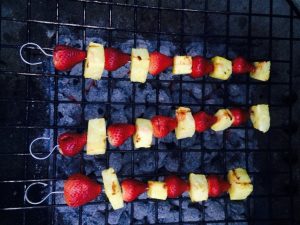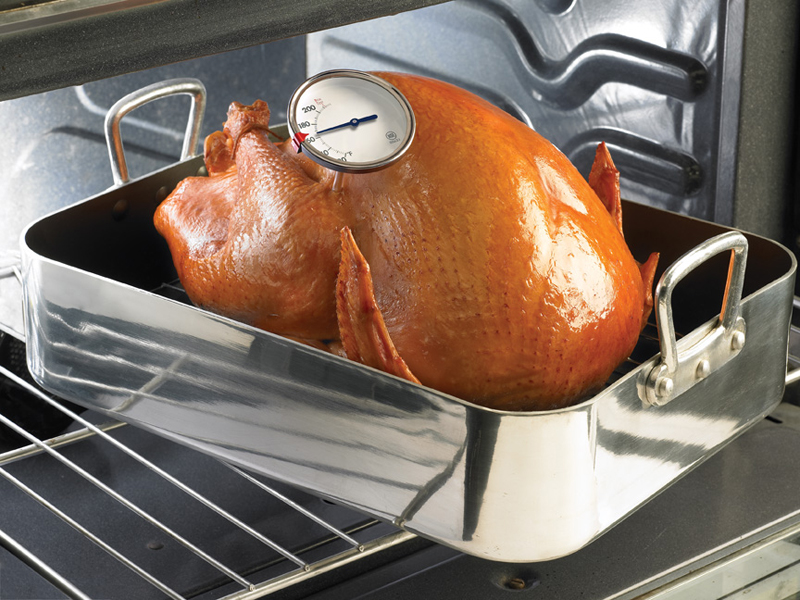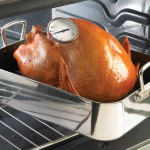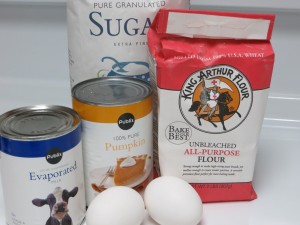by Marjorie Moore | Jun 1, 2016
 Did you know that the majority of people grill on July 4th (82%), followed by Birthdays (72%), Labor Day (70%), Memorial Day (62%) and the Super Bowl (30%)? Grilling is an all-time favorite for many households and now that the weather is warming, more families are using their grills to prepare family meals.
Did you know that the majority of people grill on July 4th (82%), followed by Birthdays (72%), Labor Day (70%), Memorial Day (62%) and the Super Bowl (30%)? Grilling is an all-time favorite for many households and now that the weather is warming, more families are using their grills to prepare family meals.
Enjoy grilling this season but be sure to be safe to avoid accidents. According to the National Fire Protection Association between 2007-2011, gas grills were involved in an annual average of 7,200 home fires, while charcoal or other solid-fueled grills were responsible for an annual average of 1,400 home fires.
Whether you have a charcoal, gas or in-door grill, become the grill master in your house by carefully reading the manufacturer’s operating and maintenance instructions for your family’s grill. Follow these important tips to help you and your family use your grill safely.
- Regularly remove grease or fat buildup from the racks/grates to reduce chances of having a fire. Thoroughly clean your grill at least once a year so it will last longer.
- For charcoal grills, look at the new safety label on the charcoal bags. Charcoal is hard to ignite so people are often tempted to use ready-to-light charcoal or charcoal fluid. These products seem to make lighting charcoal easier, but they will introduce a lot of chemicals and sometimes leave a chemical taste on the food. Always, follow the manufacturer’s instructions and never use lighter fluid after the fire is started.
- Remember to only use your gas and charcoal grills outside.
- Place your gas grill at least 10 feet away from your house or any building. Never grill in the garage, breezeway, carport, porch, or under a surface that can catch fire.
- Keep a fire extinguisher accessible in the event of a fire.
- Always keep food safety in mind when grilling and use different dishes and utensils for raw meat and cooked meat. By putting cooked food on plates that held raw meat, you are cross-contaminating the food. Any bacteria present in the raw meat could be reintroduced to the cooked food.
- Cold food should be kept cold until ready to grill – never leave raw meat, poultry, or any perishable food out at room temperature for more than two hours.
- Don’t forget to use a thermometer, especially when cooking meat, poultry and fish. Raw meat can contain harmful bacteria and other pathogens, which can cause food poisoning if ingested. A meat thermometer is an especially important tool and will help guard against food poisoning. The color of meat and poultry is not a good indicator of safety.
For more information, check out our grilling factsheet. http://bay.ifas.ufl.edu/fnc/files/2011/09/Grilling-safety.pdf

by Judy Corbus | Nov 27, 2015
 Have questions about safely preparing your holiday meal? Refer to this quick reference for answers to common questions this time of year:
Have questions about safely preparing your holiday meal? Refer to this quick reference for answers to common questions this time of year:
Q. Approximately how long should you allow for thawing a frozen turkey in the refrigerator?
A. 24 hours per each 4 – 5 pounds of turkey. In it’s original wrapper, place the frozen bird in the refrigerator (40˚F or below). To prevent cross contamination, be sure to place the turkey in a container. A thawed turkey can remain in the refrigerator for 1 – 2 days.
Q. How long should I cook the turkey?
A.
COOKING TIME – UNSTUFFED
Size of Turkey Estimated Time to Reach 165˚F
8 – 12 pounds 2 ¾ – 3 hours
12 – 14 pounds 3 – 3¾ hours
14 – 18 pounds 3 ¾ – 4 ¼ hours
18 – 20 pounds 4 ¼ – 4 ½ hours
20 – 24 pounds 4 ½ – 5 hours
COOKING TIME – STUFFED
Size of Turkey Estimated Time to Reach 165˚F
8 – 12 pounds 3 – 3 ½ hours
12 – 14 pounds 3 ½ – 4 hours
14 – 18 pounds 4 – 4 ¼ hours
18 – 20 pounds 4¼ – 4 ¾ hours
20 – 24 pounds 4 ¾ – 5 ¼ hours
Q. What is a safe internal temperature for cooking a whole turkey?
A. 165˚F. Use a food thermometer to check the internal temperature of the turkey. Insert the thermometer in the innermost part of the thigh and wing and the thickest part of the breast, making sure not to touch the bone. All turkey meat, including any that remains pink, is safe to eat as soon as all parts reach at least 165˚F. Let the turkey stand 20 minutes after removing from the oven. Remove any stuffing and carve the turkey.
Q. What is the recommended temperature for stuffing?
A. 165˚F. The stuffing should reach 165˚F whether cooked inside the bird or in a separate dish.
Q. I want to stuff the turkey. How do I do this safely?
A.
1. Cook any raw meat, poultry, or shellfish you plan to use before stuffing the turkey. Do not mix wet and dry ingredients until just before stuffing the turkey cavity; wet ingredients can be prepared ahead of time and refrigerated.
2. Spoon stuffing directly into the cavity right after preparation. Stuff loosely – plan for ¾ cup of stuffing per pound. The stuffing should be moist, not dry – bacteria is destroyed more quickly by heat in a moist environment. Do NOT stuff turkeys to be grilled, smoked, fried, or microwaved.
3. Cook the turkey immediately in an oven no lower than 325˚F.
4. Use a food thermometer to make sure the temperature of the turkey AND the center of the stuffing have reached a safe minimum internal temperature of 165˚F.
5. Let the cooked turkey rest for 20 minutes before removing the stuffing and carving.
Q. How long can I keep leftovers?
A. Refrigerate all leftovers within two hours after cooking. Divide cooked foods into shallow containers; this allows the center of the food to cool more quickly and evenly. Use within 3-4 days or freeze for longer storage. Be sure to reheat hot foods to at least 165˚F; sauces, soups, and gravies should be heated to a rolling boil.
For more information about holiday foods and food safety (in English and Spanish), call: USDA Meat and Poultry Hotline, 1-888-MPHotline (1-888-674-6854) www.fsis.usda.gov
Source: Avoid Guessing About Holiday Food Safety, University of Nebraska-Lincoln Extension.

by Judy Corbus | Jun 26, 2015

Photo Credit: Chris Luczkow, www.flickr.com
The bright, beautiful colors of a fireworks displays are a sight to behold and the highlight of July 4 celebrations across the country. But, it’s important to be careful when selecting and using fireworks for your family’s celebration. The National Council on Fireworks Safety offers these consumer safety tips:
- Check and obey local laws regarding what types of fireworks are legal in your area. Laws vary by state and municipality.
- Only buy consumer fireworks from a licensed store, tent, or stand. Never buy fireworks from an individual’s house or from someone on the street. Such devices are likely illegal explosives or professional 1.3G fireworks that can seriously injure you. Illegal explosives are often unpackaged and wrapped in brown paper. They are unlikely to have any safety warnings or the place of manufacture.
- Know your fireworks; read the cautionary labels and performance descriptions before igniting.
- A responsible adult should ALWAYS supervise fireworks activities. Never give fireworks to children.
- Do not consume alcohol while using fireworks.
- Wear safety glasses when shooting fireworks.
- Always have a bucket of water and charged water hose nearby.
- Light one firework at a time and then quickly move away.
- Use fireworks OUTDOORS in a clear area, away from buildings and vehicles.
- Never relight a “dud” firework. Wait 20 minutes and then soak it in a bucket of water.
- Never carry fireworks in your pocket or shoot them into metal or glass containers.
- Do not experiment with homemade fireworks.
- Dispose of spent fireworks by wetting them down and placing in a metal trash can away from any building or combustible materials until the next day.
- FAA regulations PROHIBIT the possession and transportation of fireworks in your checked baggage or carry-on luggage.
- Report illegal explosives, like M-80s, Quarter Sticks, and Cherry Bombs, to your local fire or police department.
Use your fireworks according to instructions and safety warnings and enjoy a safe, happy Fourth of July!
Source: National Council on Fireworks Safety, http://www.fireworksafety.com/
by Marjorie Moore | Nov 5, 2013

Store homemade pumpkin pies in the refrigerator.
To refrigerate pumpkin pies or not to refrigerate? That is the question. You have seen pumpkin pies in the bakery section of supermarkets not refrigerated and you wonder if you can do the same at home. Unfortunately, homemade pumpkin pies need special care to prevent foodborne illness. Pumpkin pies are a custard-style pie made by using potentially hazardous foods such as eggs and milk. Food temperature controls are especially important with foods classified as potentially hazardous.
Pumpkin pies also have a high moisture and protein content. They must be kept at a refrigerated temperature of 41° F or cooler. If the pies are left out of the refrigerator for more than 2 hours, bacteria grows more rapidly and can cause a foodborne illness.
When cooking, make sure to test your pies for doneness by inserting a clean knife in the center. The knife should come out clean. Remove the pies from the oven and allow them to cool at room temperature for about 30 minutes. After they have cooled, cover and refrigerate to keep them cold.
So, why are pumpkin pies displayed at room temperature at the supermarket? These pies are formulated with shelf-stable ingredients, such as preservatives, that prevent harmful bacteria from growing. Commercial pies must be properly labeled, “approved by the Food and Drug Administration”. They will carry the letters “RT”, which means they meet the guidelines required for display at room temperature. The label will also give a “sell by” or “use by” date. Even these pies should be refrigerated for storage at home especially after they have been cut.
Additional pie safety tips include making sure you purchase clean, refrigerated and uncracked eggs. Keep hands clean by washing them with warm water and soap before handling ingredients. Also, wash utensils, equipment and work surface area with hot soapy water before and after contact with eggs. Never leave milk or eggs out of the refrigerator for more than two hours.
Enjoy those traditional holiday feasts, but keep them safe!
 Did you know that the majority of people grill on July 4th (82%), followed by Birthdays (72%), Labor Day (70%), Memorial Day (62%) and the Super Bowl (30%)? Grilling is an all-time favorite for many households and now that the weather is warming, more families are using their grills to prepare family meals.
Did you know that the majority of people grill on July 4th (82%), followed by Birthdays (72%), Labor Day (70%), Memorial Day (62%) and the Super Bowl (30%)? Grilling is an all-time favorite for many households and now that the weather is warming, more families are using their grills to prepare family meals.




